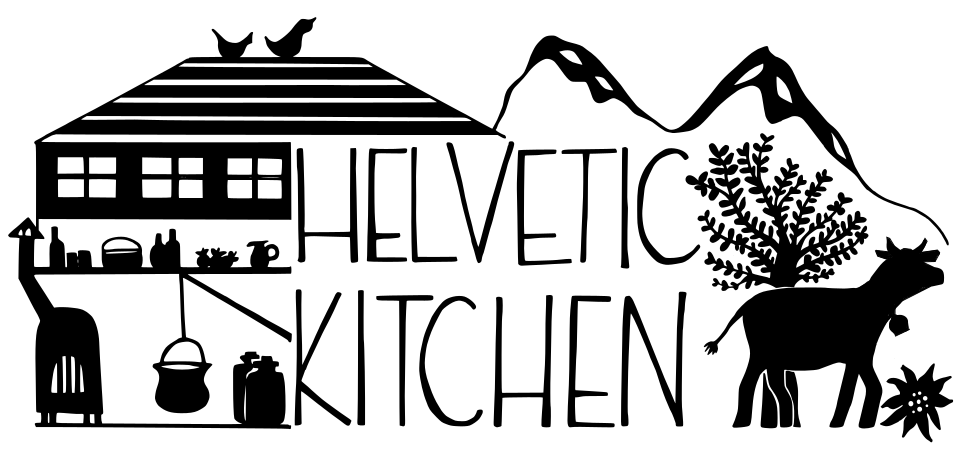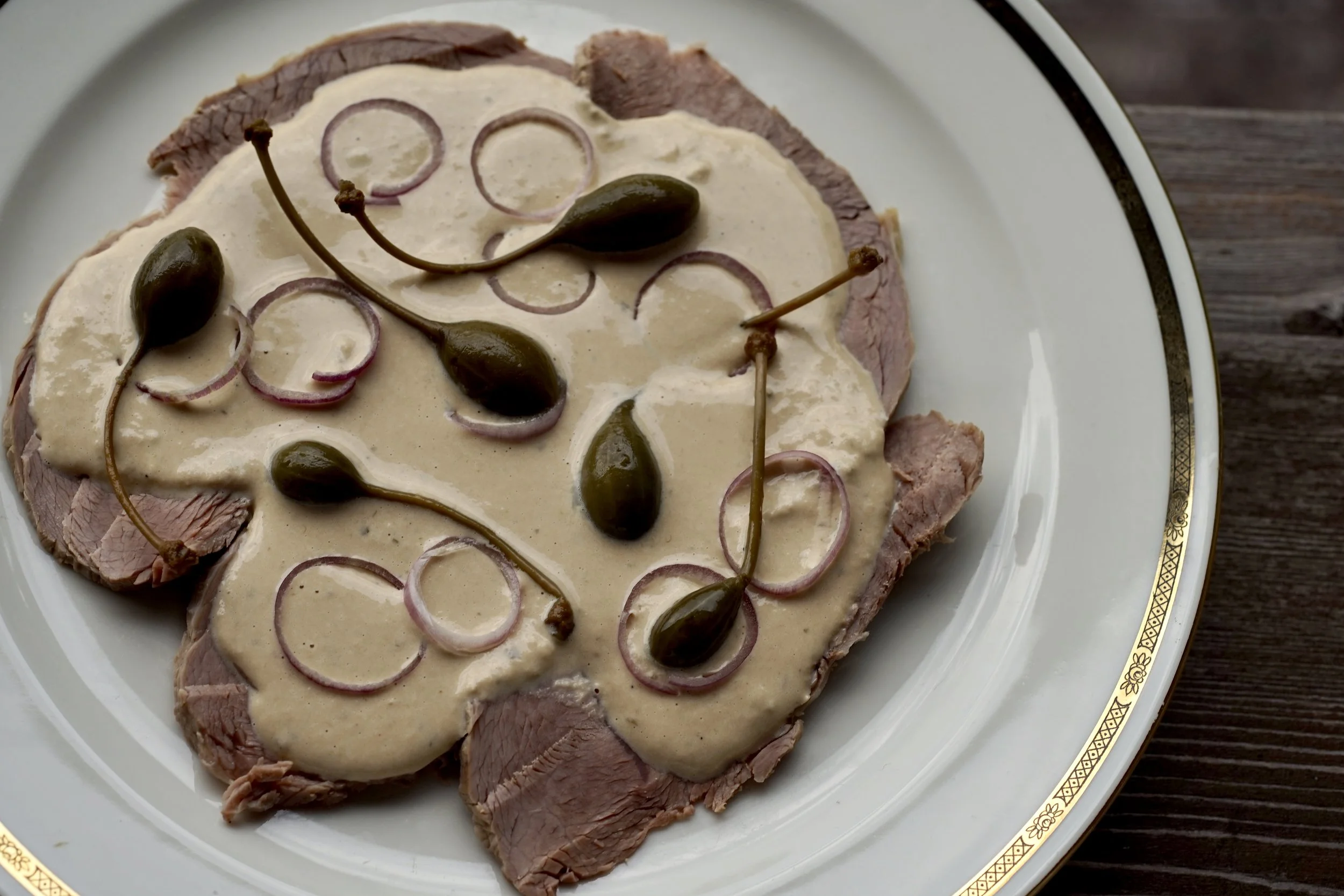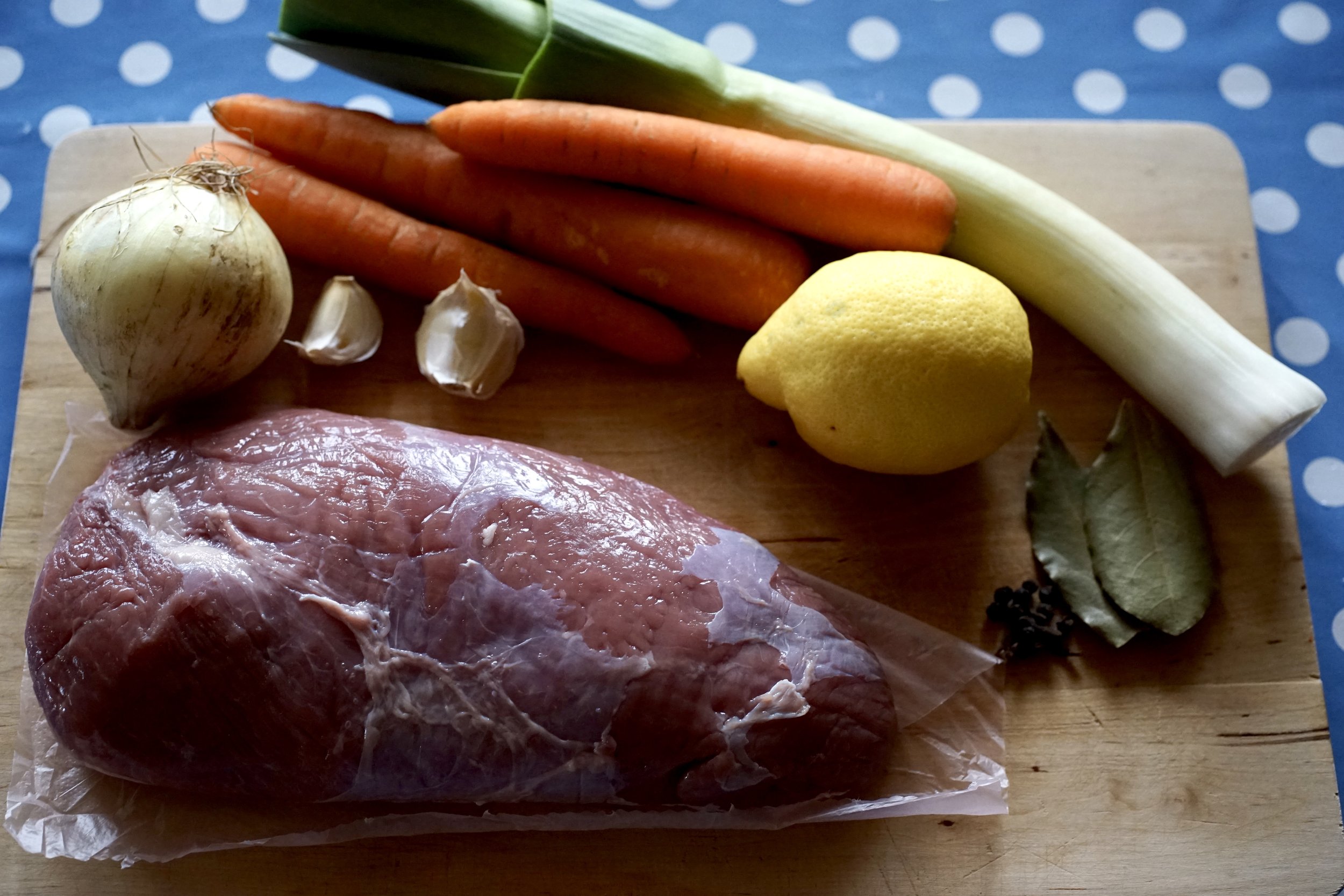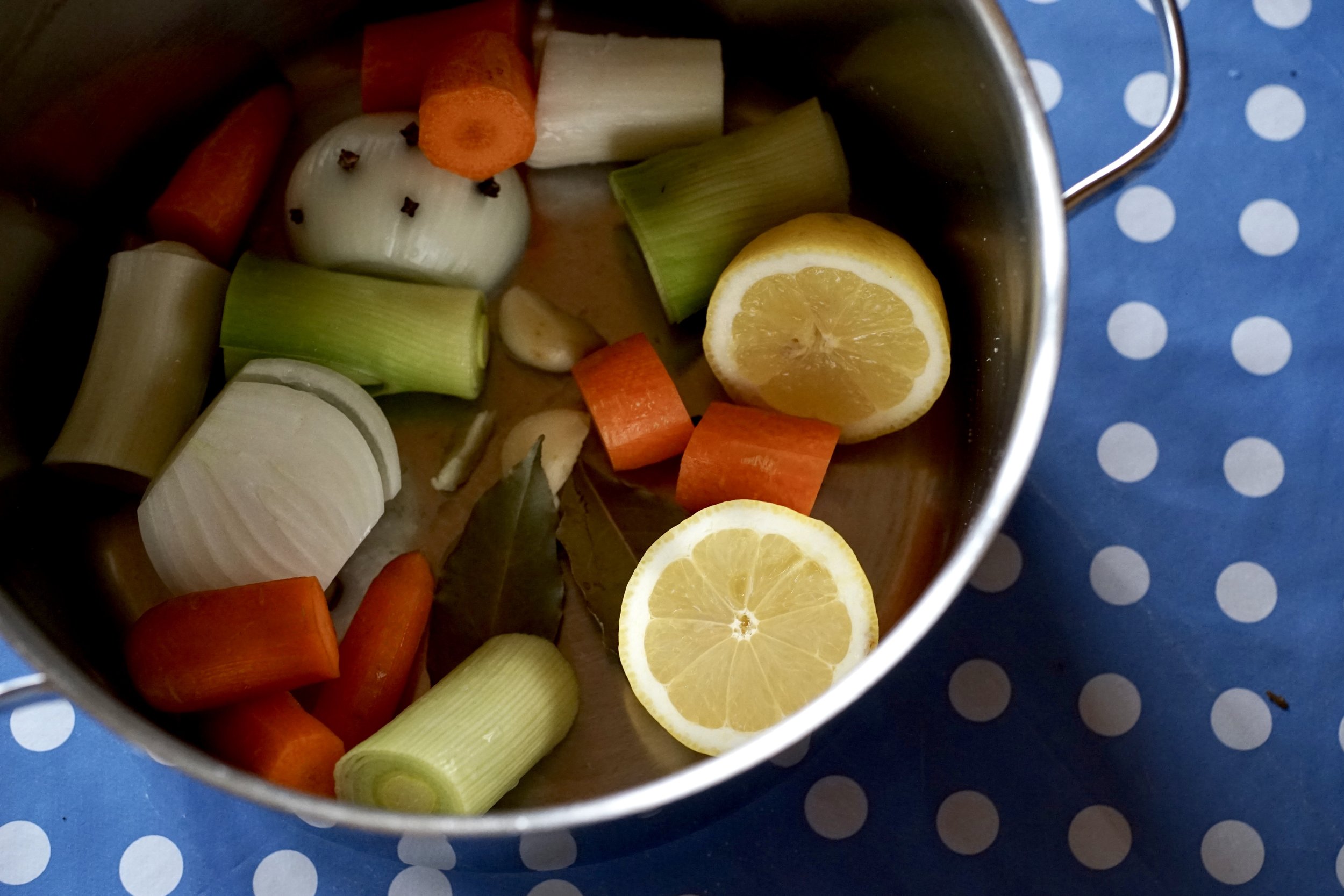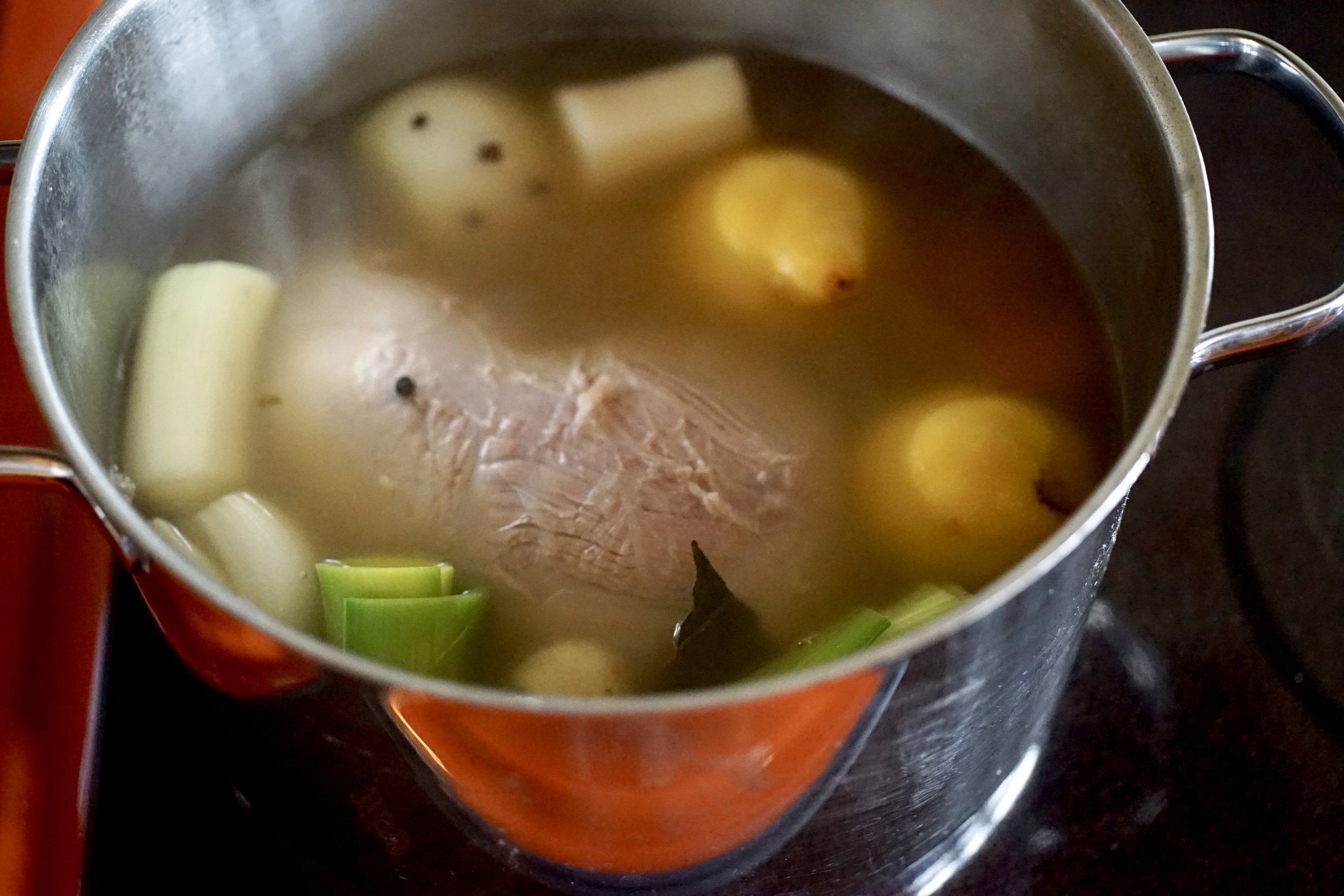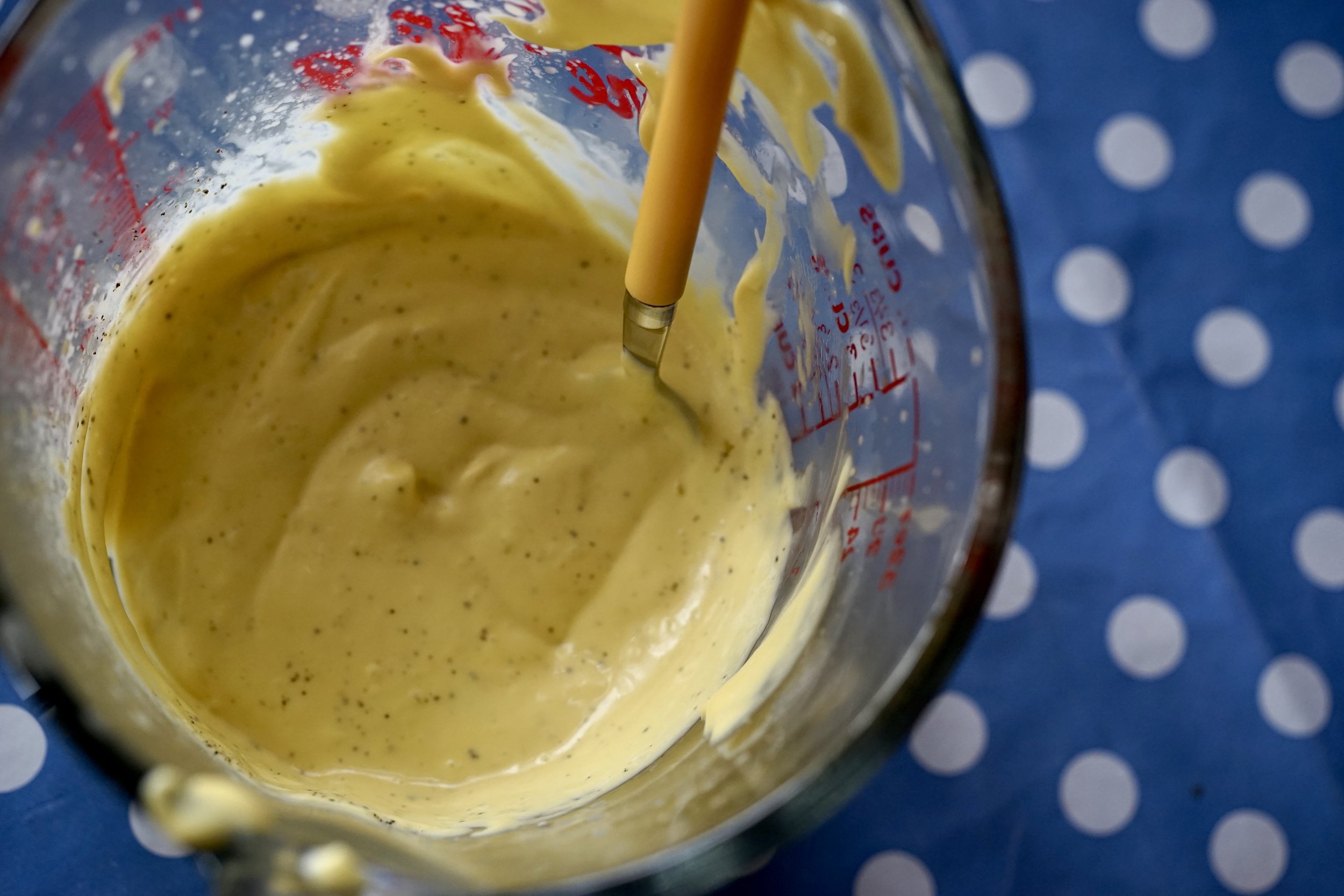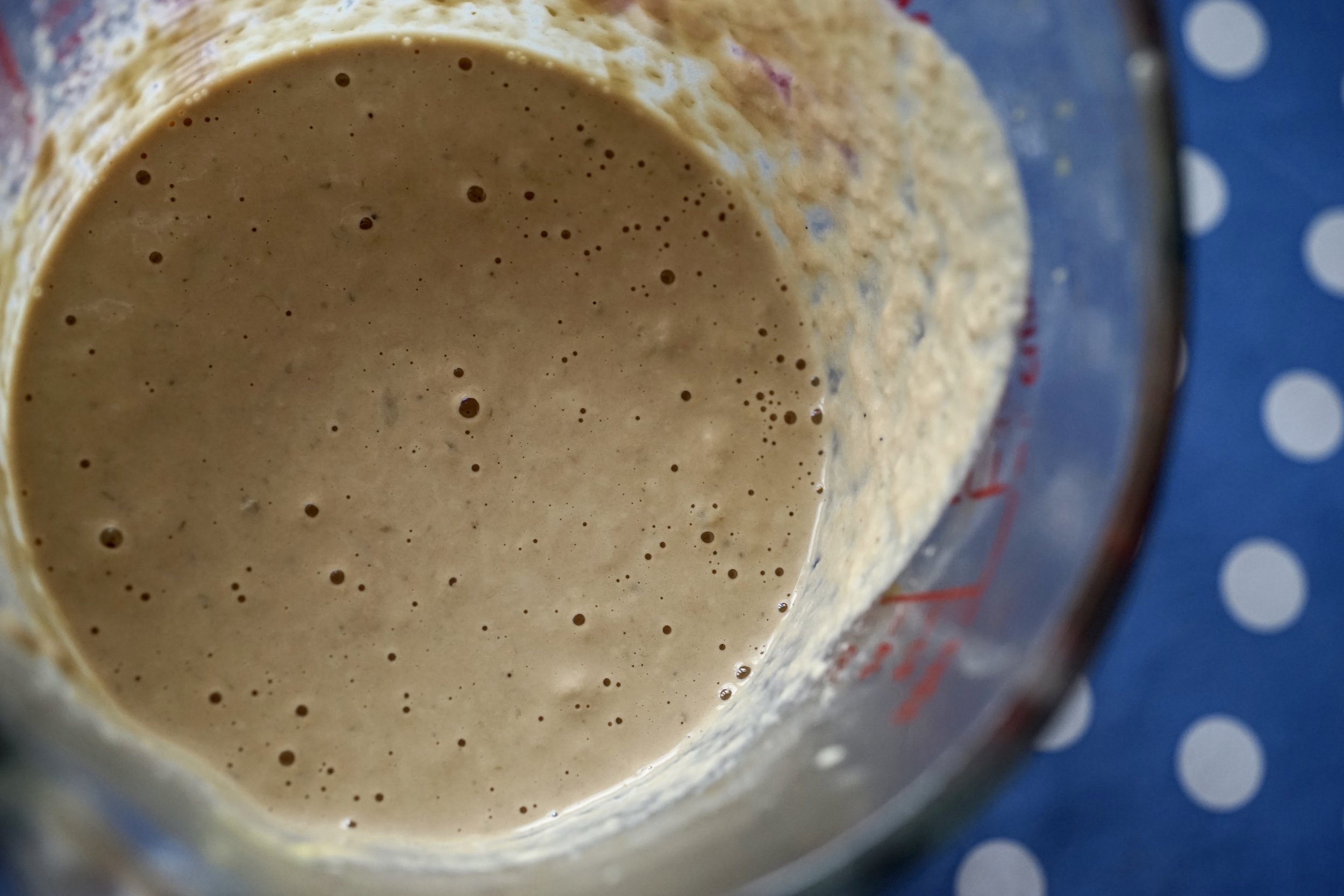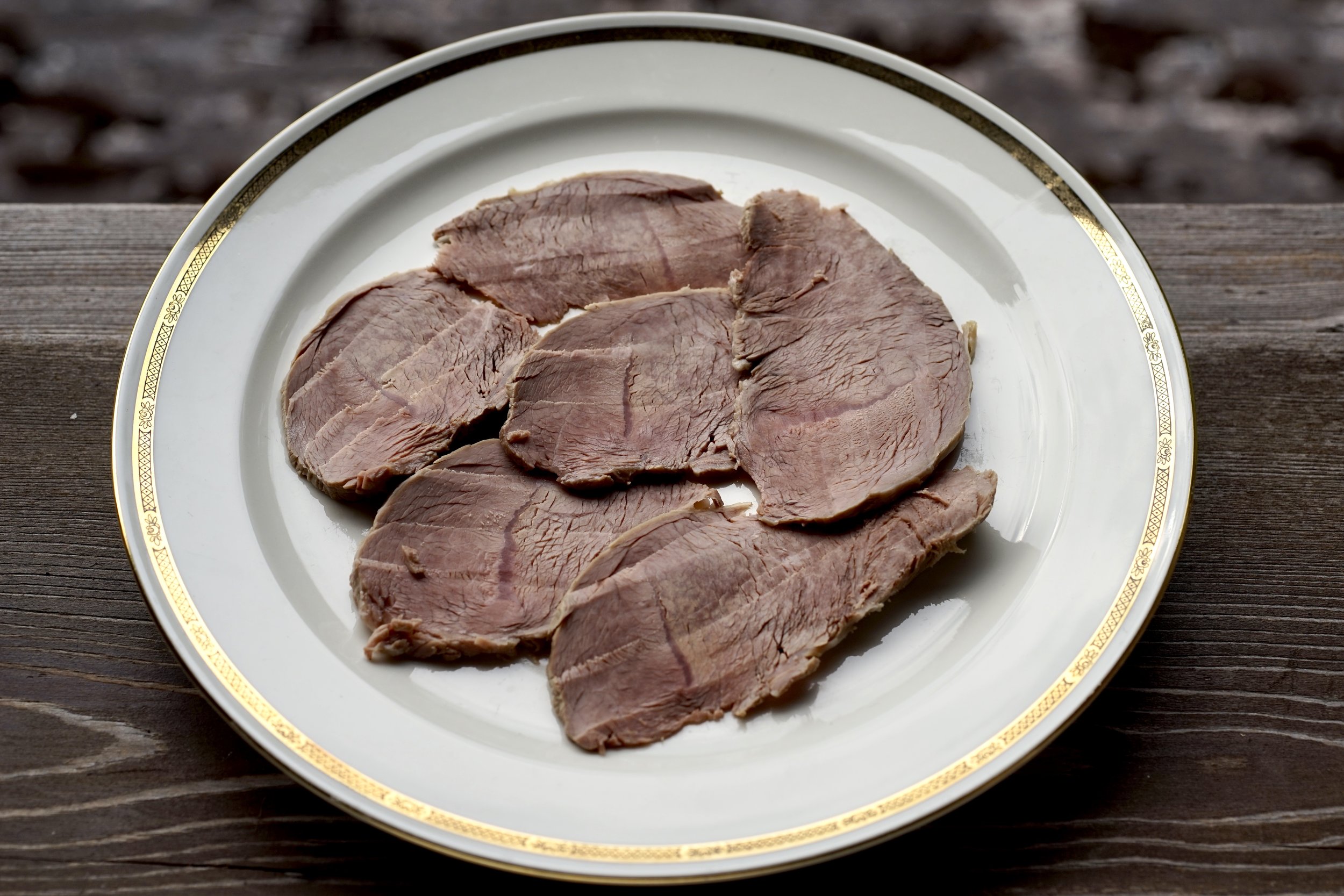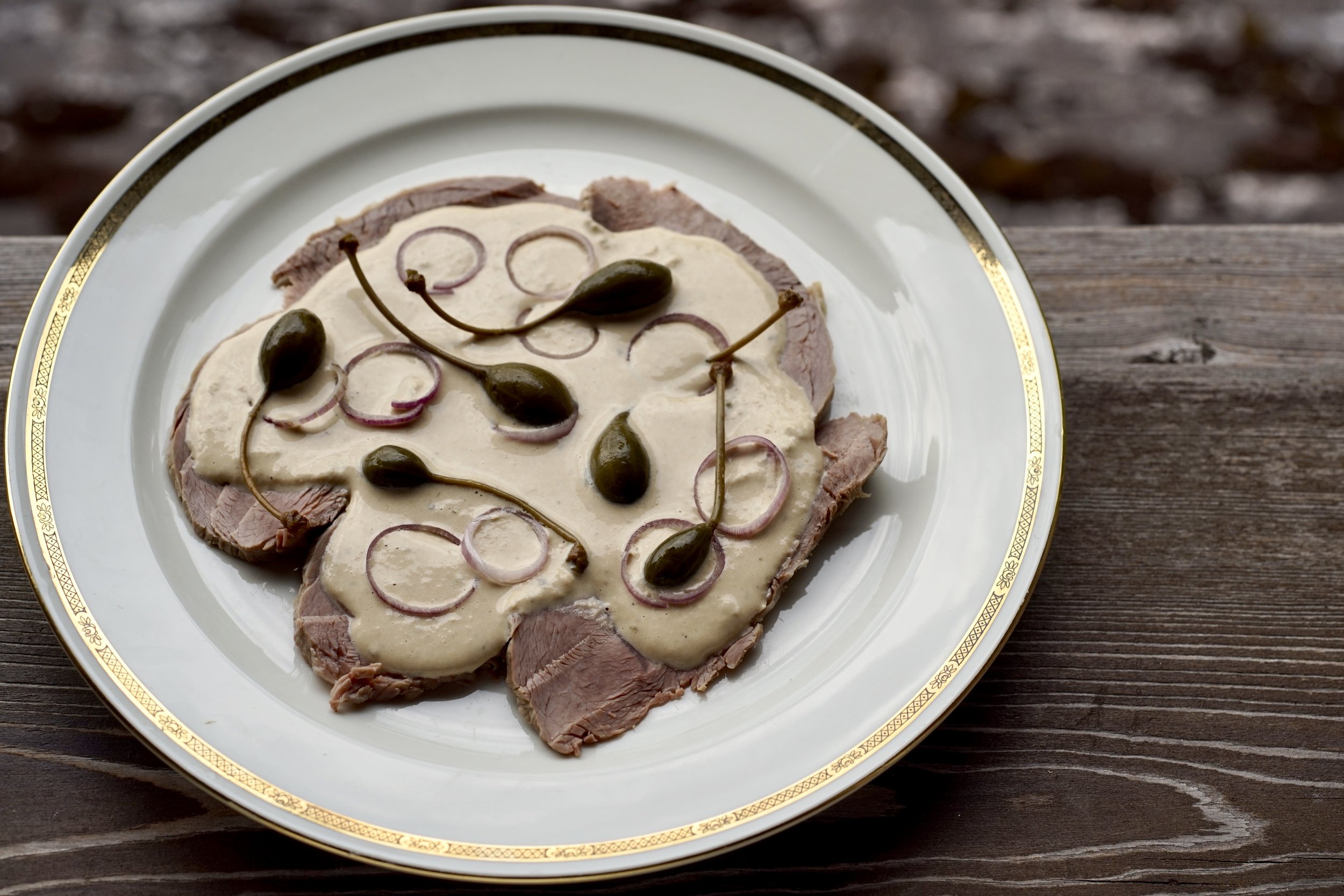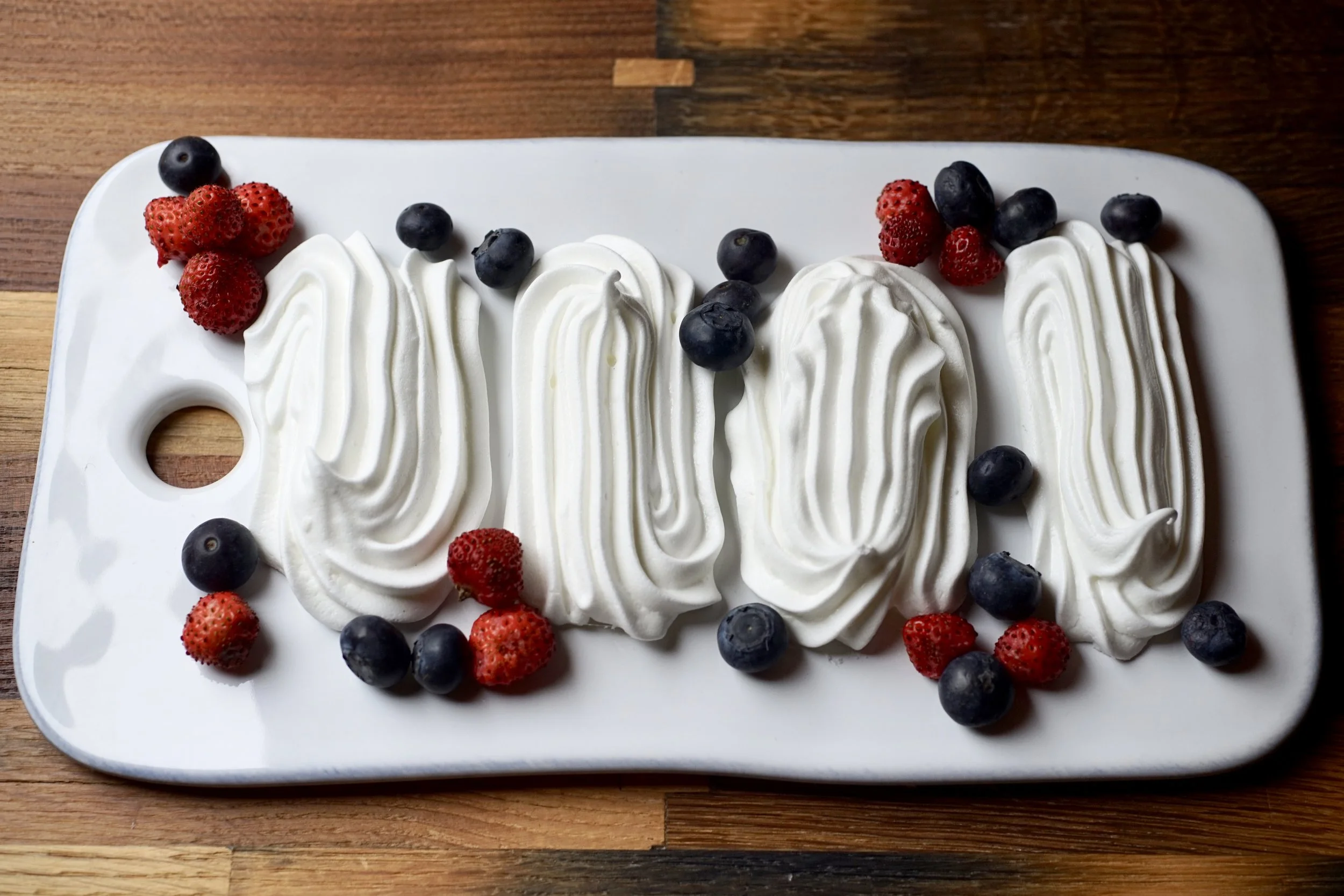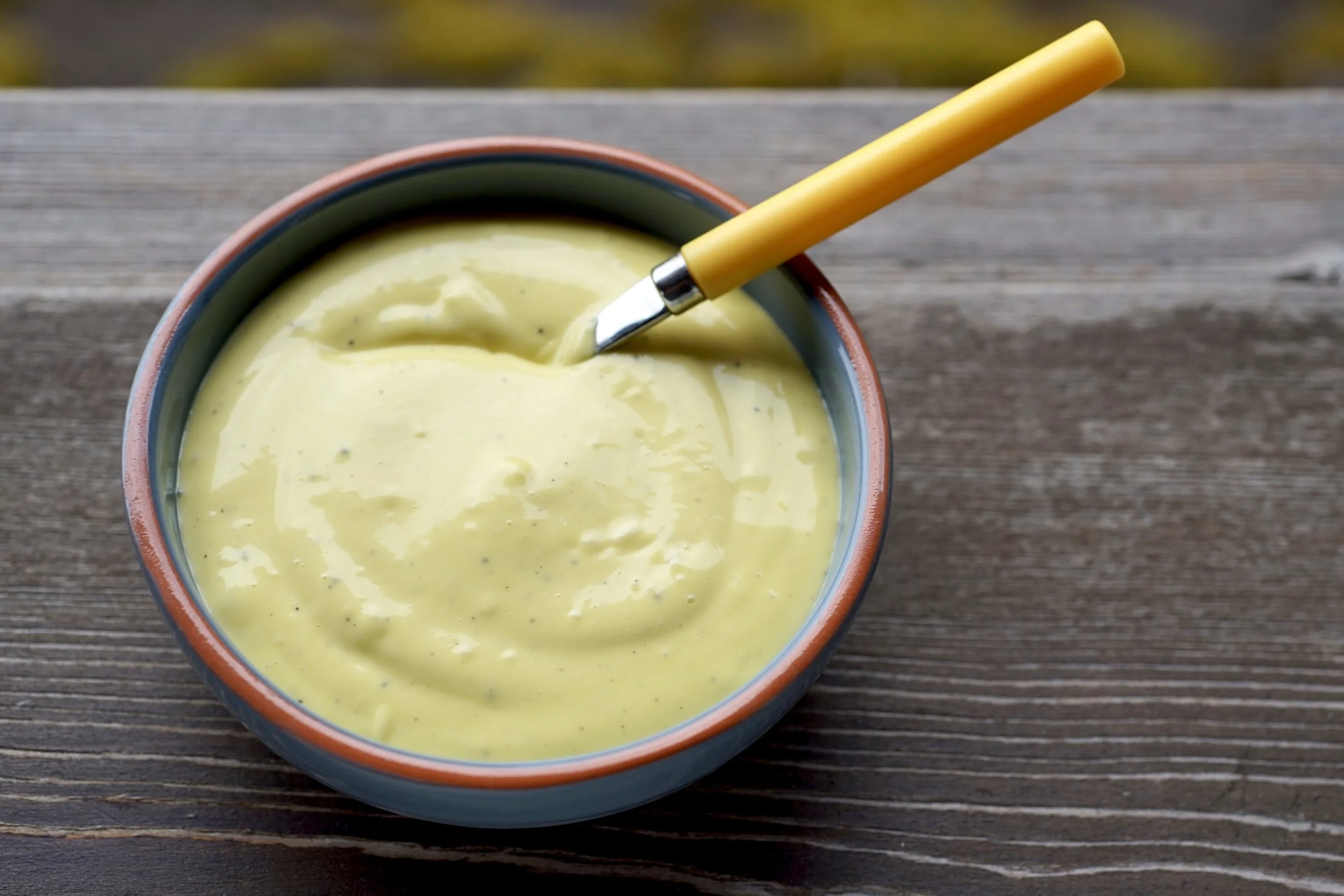Vitello Tonnato
Vitello Tonnato, veal and tuna, is not Swiss (it originated just over the Italian border in Piedmont), but it’s beloved throughout the country, all summer long.
Thin slices of veal are arranged on a plate and then covered with a mayonnaise-tuna sauce, then topped with capers and sometimes onion.
I like pretty much every Vitello Tonnato I meet (even the pre-made variety from supermarkets) and it’s usually a filling summer restaurant meal when it’s too hot for something warm.
It’s not a difficult dish to make, though you need time on your side to poach the veal (plus I highly recommend making your own mayonnaise—my post on how, here), and people will be impressed that you’ve made it from scratch.
As with many classic dishes, recipes abound. I looked at recipes from Swiss Milk, Migusto, and Annemarie Wildeisen while customizing my version below. There’s wiggle room in how you flavour the poaching liquid, as well as how intensively mayonnaisey your sauce is. Mine is slightly lighter on the mayo, but use your discretion. Serve with plenty of good bread for sopping up the extra sauce—Bürli if you can get it.
Poaching liquid:
2 carrots, peeled and sliced
leek, sliced
lemon, halved
1 onion, peeled and quartered
2 cloves of garlic, peeled and halved
2 bay leaves
5 cloves
5 peppercorns
1 L stock
Meat:
600-800 g veal roast (for more on cuts of meat, see below)
Place everything in a large pot except the meat and bring to a boil.
Turn the heat down to low and add the meat.
Simmer for an hour and a half, then turn off the heat and let the meat sit in the poaching liquid until cool.
Reserve 100 ml of the poaching liquid for the sauce.
Once the meat is cool, remove it from the pot and cut it into very thin slices.
Sauce:
150 g tuna (about 1 can, drained)
3 anchovies
80 g mayonnaise
1 tbsp capers
1 tbsp lemon juice
100 ml reserved poaching liquid
Garnish:
thinly sliced onions
Puree everything for the sauce with an immersion blender.
To assemble:
Arrange the thinly sliced veal on a plate, spoon over the tuna sauce, and garnish with caper berries and thinly sliced onions.
Meat: it is always a challenge to describe the different cuts of meat, especially when you try converting this into the butcher systems from different countries (see my posts on Swiss cuts of beef and Swiss cuts of pork). Here, I used a something that was labelled Kalbsbraten (veal roast), and this piece came from the Schulter (shoulder) of the calf. Shoulder (sometimes called falsches Filet) is a solid bet, but I have also seen the following (Swiss) cuts mentioned as good alternatives: runde or flache Nuss, or runder Mocken which may or may not simply be labelled as Kalbsbraten. In English speaking countries I have also seen this simply labelled as veal roast.
I used a piece of meat that was just over 600g and it comfortably fed three adults and a hungry toddler, with lots of sauce for dipping bread in. If you are serving four adults, 600g for a very light meal, and 800g for a more substantial dinner.
I never used caper berries before coming to Switzerland. According to Wikipedia, capers are the bud of the fruit, whereas caper berries are the fruit itself. In Switzerland you can buy them in most supermarkets as Kapernäpfel / Câprons / Cucunci. If you can’t find the caper berries, just use regular capers.
This is a great make ahead meal—the original Italian version was sometimes left up to five days to let the flavours mingle.
Another Swiss summer favourite?
Siedfleischsalat

